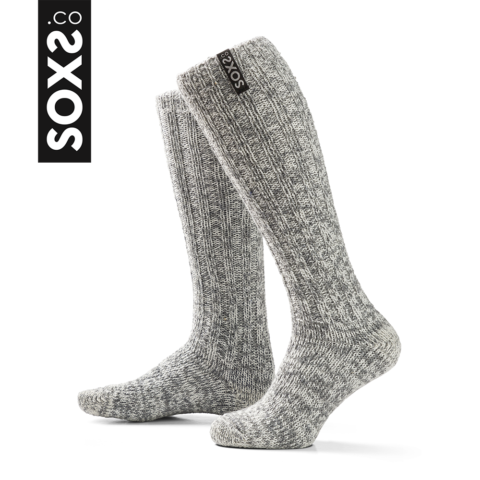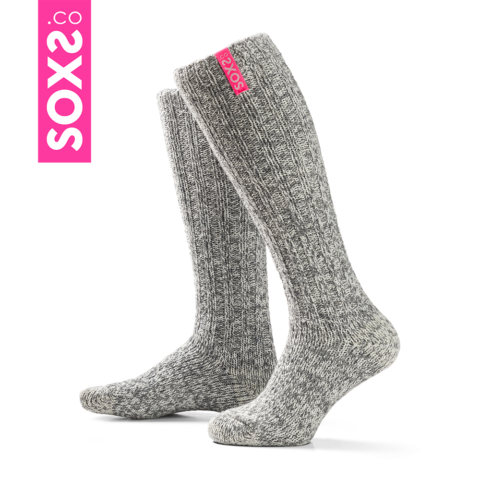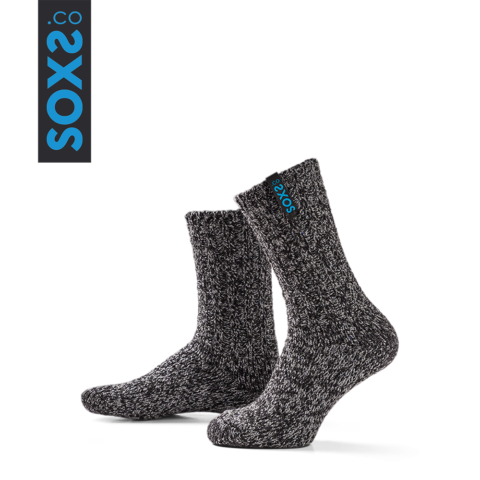Soft warm premium wool socks
Gift ready, stylishly packaged
Orders placed before 1:00 PM will be shipped today (on weekdays) PLEASE NOTE: The delivery time of Pimp My Soxs is 5 working days!
Winter sports offer a wonderful escape into snowy landscapes, and proper equipment makes all the difference in your experience. While skis and snowboards get most of the attention, quality ski socks play a crucial role in your comfort on the slopes. These specialized wool socks keep your feet warm and dry, allowing you to focus on enjoying your winter adventure.
Ski socks are designed specifically for winter sports activities, offering features that regular socks simply can’t match. They provide essential warmth while maintaining breathability in cold conditions. With their snug fit, these specialized socks stay in place during movement, reducing friction and preventing uncomfortable blisters.
The right ski socks offer optimal insulation when you spend hours in freezing temperatures. They maintain the perfect balance between warmth and breathability, making them valuable for any outdoor activity in winter conditions.
Ski socks function effectively because of their thoughtful design and material composition. Many are crafted from a blend of merino wool, synthetic fibers, and elastane. Merino wool stands out for its natural insulation and moisture-management properties, making it ideal for sustainable socks that perform in challenging conditions.
Strategic padding provides cushioning and support exactly where your feet need it most. The moisture-wicking capability of wool socks is particularly important, as they draw sweat away from your skin to keep your feet dry. This feature prevents the chill that comes with dampness, protecting you from discomfort during winter activities.
When choosing ski socks, consider the fit, material, and your specific activities. A proper fit prevents bunching and slipping that can cause blisters. Look for socks with a snug but comfortable feel and enough elasticity to stay in position throughout your day.
Materials matter significantly in performance. High-quality organic wool socks offer excellent warmth, durability, and environmental benefits. These sustainable socks support both your comfort and ecological values. Consider the thickness based on your activity—thicker options provide more warmth, while thinner socks offer better control in fitted boots. For particularly cold conditions, extra warm socks provide additional insulation.
Quality ski socks enhance your experience in various winter activities. Whether you’re snowboarding, ice climbing, or enjoying a winter hike, the right wool socks make a noticeable difference in comfort. They provide the warmth and support that help you stay focused on your activity rather than cold feet.
For daily winter activities like running or walking, wool socks offer similar benefits. They keep your feet comfortable and dry in changing weather conditions, making them versatile additions to your winter wardrobe.
The most frequent mistake with ski socks is choosing the wrong size. Properly fitting socks prevent blisters, discomfort, and reduced performance. Ensure your socks fit well without bunching inside your boots. Wearing multiple pairs in an attempt to increase warmth actually restricts circulation and can make your feet colder.
Regular cotton socks aren’t suitable for winter sports as they retain moisture, leading to damp feet and blisters. Save your cotton socks for everyday wear, and choose wool options with superior moisture-wicking properties for winter activities.
While everyday socks work fine for regular activities, ski socks are specifically engineered for winter sports demands. The key differences are in materials, fit, and functionality. Quality ski socks use merino wool and other technical fibers known for insulation and moisture management, unlike standard cotton options.
Ski socks include additional padding and support in high-pressure areas, ensuring comfort and reducing blister risk during long days of activity. Regular socks lack these specialized features, making them less effective for winter sports.
Proper care extends the life and performance of your ski socks. Follow the manufacturer’s washing instructions—most can be machine washed on gentle cycles with mild detergent. Avoid fabric softeners as they diminish the moisture-wicking properties that keep your feet dry.
Air drying preserves the integrity of the wool fibers. High heat from dryers can damage elasticity and shape, reducing the effectiveness of your socks. With proper care, quality wool socks will provide warmth and comfort through many winter seasons.
Quality ski socks are essential equipment for winter sports enthusiasts. By understanding their features and benefits, you can make choices that enhance your comfort on the slopes. Consider fit, material, and your specific activities when selecting ski socks, and maintain them properly to enjoy their benefits year after year.
Whether you’re skiing, snowboarding, or simply enjoying winter outdoors, properly designed wool socks keep your feet comfortable throughout your adventure. Which winter activities would you like to enjoy with the comfort of SOXS wool socks? Discover our collection at soxs.co.

Knee height

Knee height

Calf height